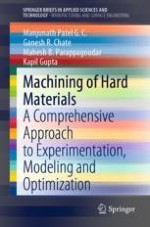2020 | OriginalPaper | Buchkapitel
2. Studies on Machining of Hard Materials
verfasst von : Manjunath Patel G. C., Ganesh R. Chate, Mahesh B. Parappagoudar, Kapil Gupta
Erschienen in: Machining of Hard Materials
Aktivieren Sie unsere intelligente Suche, um passende Fachinhalte oder Patente zu finden.
Wählen Sie Textabschnitte aus um mit Künstlicher Intelligenz passenden Patente zu finden. powered by
Markieren Sie Textabschnitte, um KI-gestützt weitere passende Inhalte zu finden. powered by
